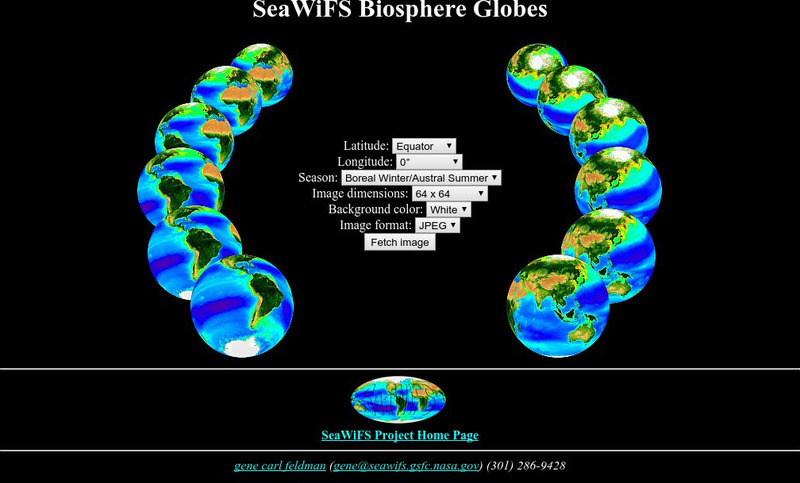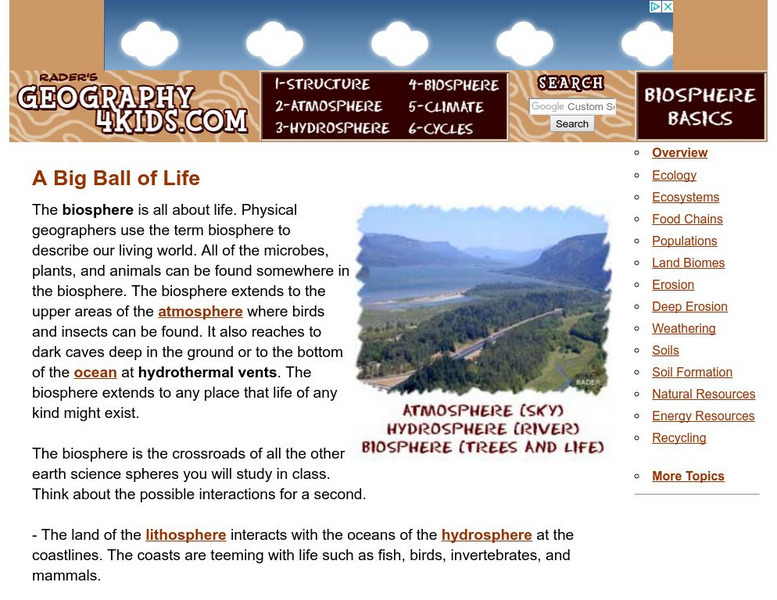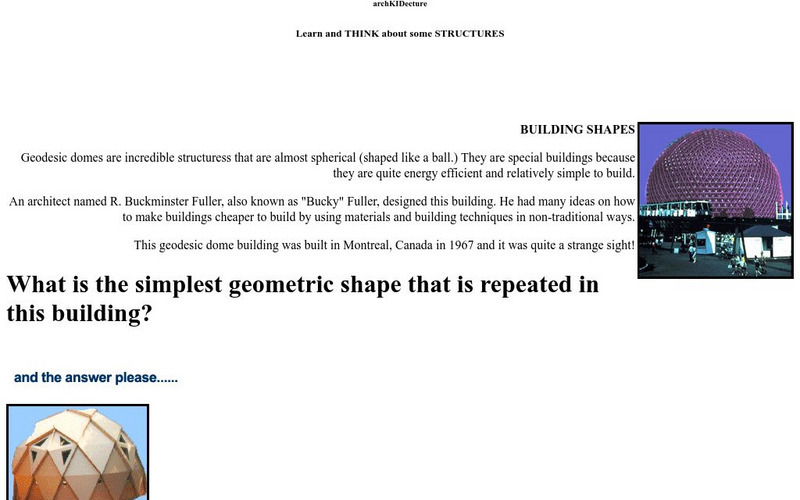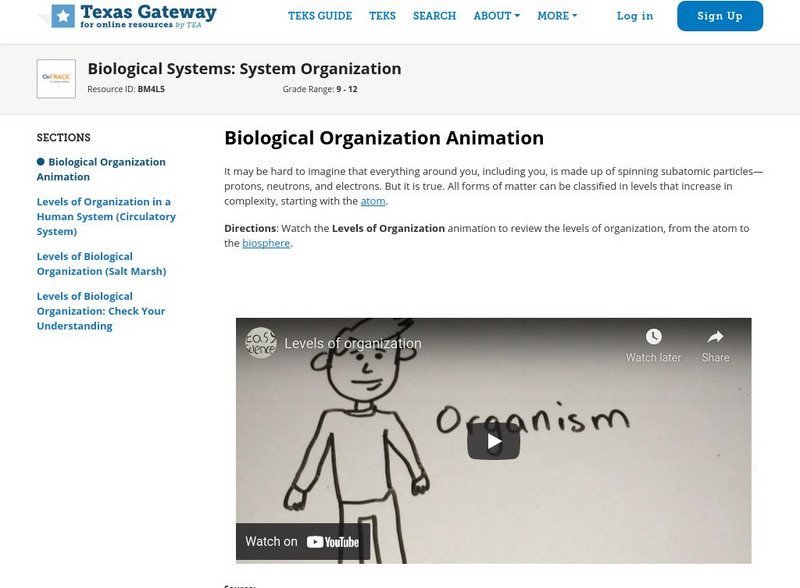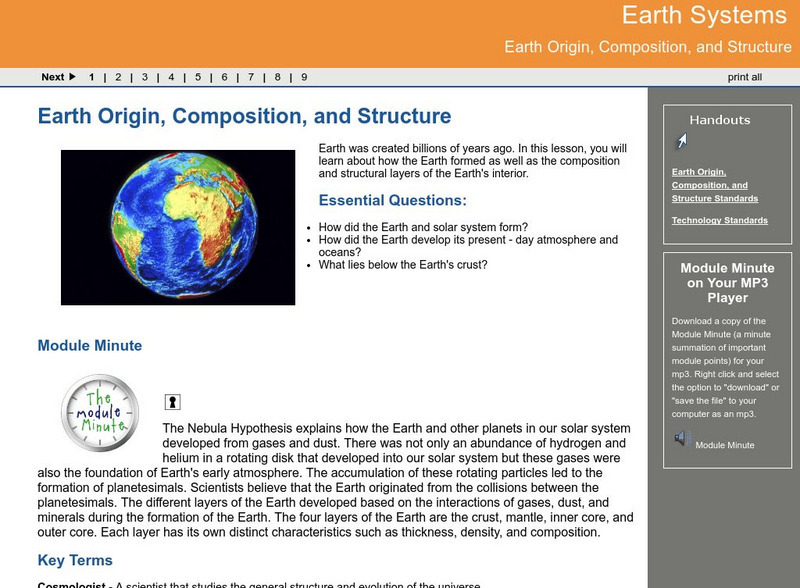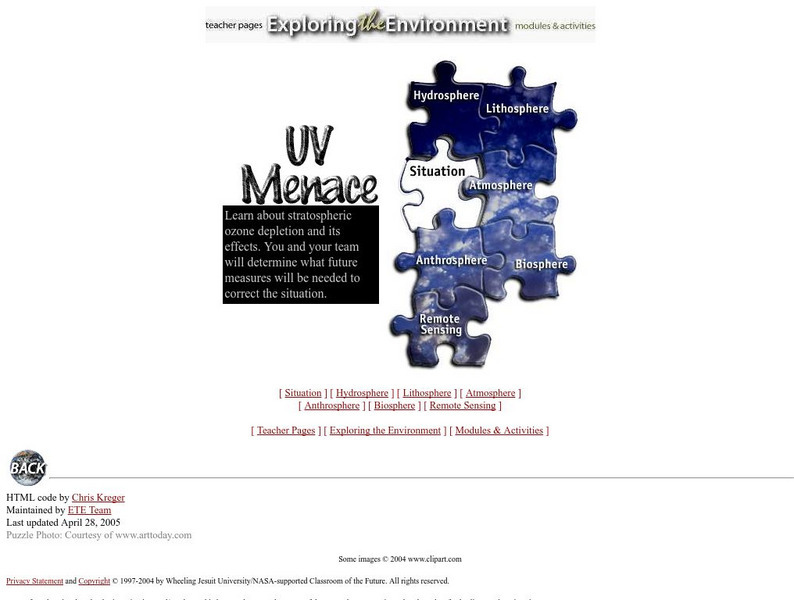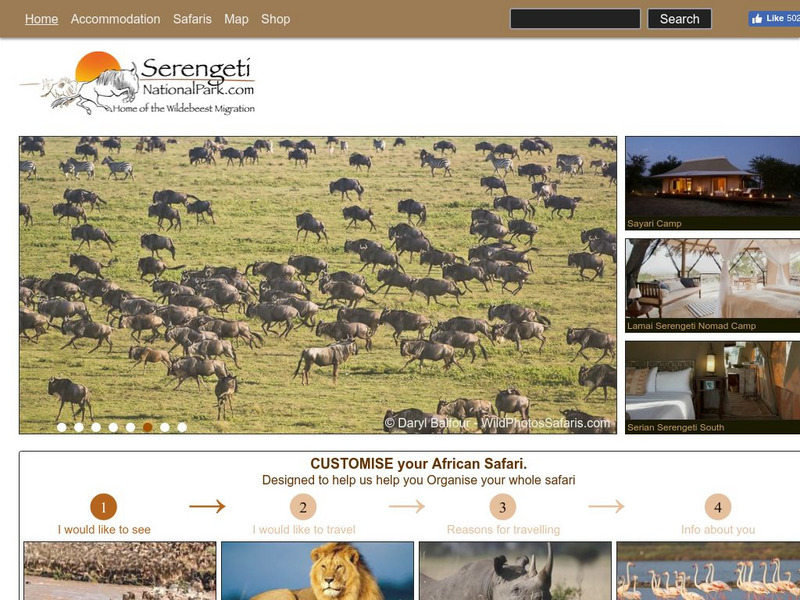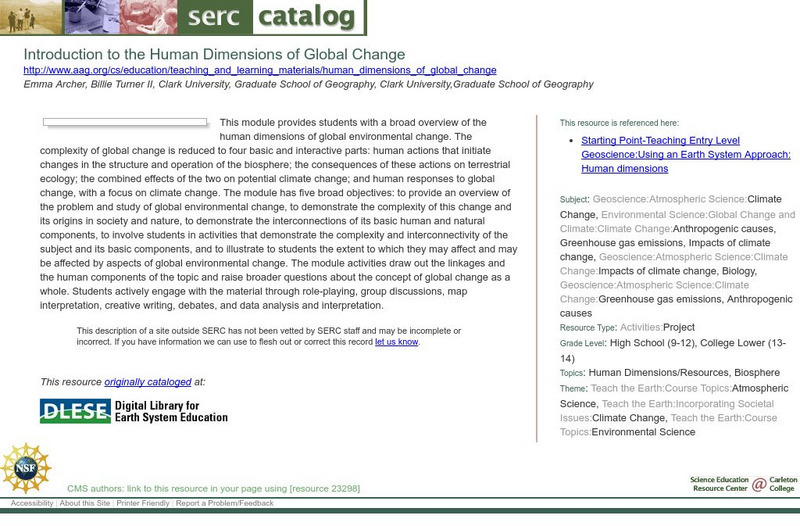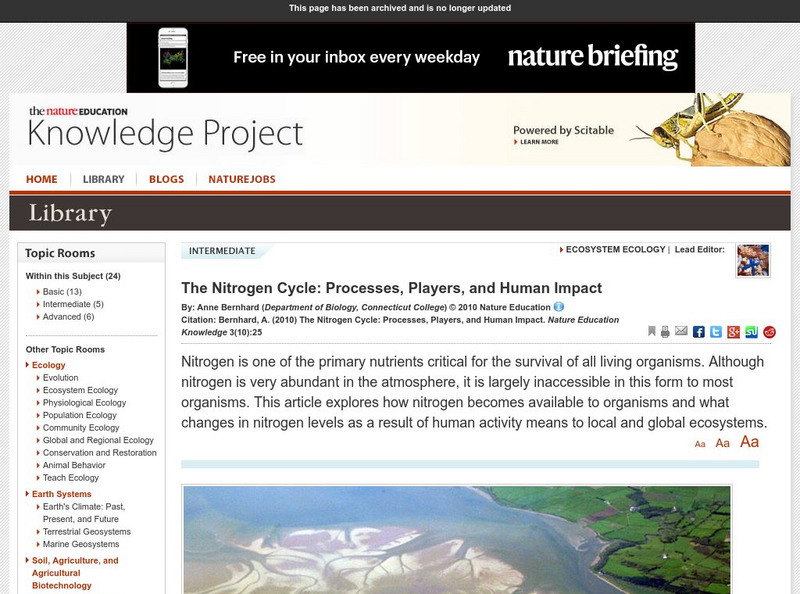NASA
Nasa: Sea Wi Fs Biosphere Globes
This interactive globe allows you to get any view of the earth by entering latitude, longitude and season criteria.
Geography 4 kids
Geography4 kids.com: A Big Ball of Life
Gain knowledge of the biosphere highlighted in this resource. The biosphere includes all parts of the living world.
archKIDecture
Arch Ki Decture: Geodesic Dome
Using the Montreal Biosphere as as an example, ArchKIDecture defines and illustrates the term "geodesic dome."
Science Struck
Science Struck: The 6 Chief Levels of Organization in Ecology
Describes six levels of organization in the biological world - individual species, population, community, ecosystem, biome, and biosphere.
Massachusetts Institute of Technology
Mit: Open Course Ware: Courses: Civil Environmental: Ecology I: The Earth System
College-level online course highlighting the fundamentals of ecology. Course topics include coevolution of the biosphere, geosphere, atmosphere, and hydrosphere; photosynthesis and respiration; and the carbon, nitrogen, and water cycles....
Texas Education Agency
Texas Gateway: Biological Systems: System Organization
This tutorial will investigate the levels of organization from the atom to the biosphere.
Curated OER
National Park Service: Everglades National Park
Welcome to the official site of the Everglades National Park. It is the largest subtropical wilderness in the United Stat. Designated as a World Heritage Site, International Biosphere Reserve, and Wetland of International Importance....
Curated OER
Blocks
Using the Montreal Biosphere as as an example, ArchKIDecture defines and illustrates the term "geodesic dome."
Georgia Department of Education
Ga Virtual Learning: Earth Origin, Composition, and Structure
In this lesson, you will learn about how the Earth formed as well as the composition and structural layers of the Earth's interior.
TeachEngineering
Teach Engineering: Population Density: How Much Space Do You Have?
Students learn about population density within environments and ecosystems. They determine the density of a population and think about why population density and distribution information is useful to engineers for city planning and...
University Corporation for Atmospheric Research
Ucar: The Earth as a System
An overview of content about Earth and its atmosphere. The module was developed for middle school science teachers to provide background information for teaching the curriculum.
NOAA
Noaa: Explorations
This resource page contains an exhaustive list of pictures and videos of sea floor structures found all over the world.
TED Talks
Ted: Ted Ed: A Guide to the Energy of the Earth
Energy is neither created nor destroyed - and yet the global demand for it continues to increase. But where does energy come from, and where does it go? This video examines the many ways in which energy cycles through our planet, from...
Virginia Tech
Virginia Polytechnic Institute: Greenhouse Dinosaur Extinction Theory
This comprehensive page discusses the Asteroid Impact vs. Volcano-Greenhouse dinosaur extinction debate. It was written by paleontologist, professor, and scientist Dr. Dewey McLean.
Center for Educational Technologies
Nasa Classroom of the Future: Environment Module: Uv Menace
This site provides information and activities for classes to learn more about ozone depletion and UV radiation.
Other
Serengeti National Park
The beautiful, official site for the Serengeti National Park provides extensive information about the Serengeti ecosystem, physical features, wildlife, and taking a safari through the region. As an added bonus, learn some Swahili.
TED Talks
Ted: Ted Ed: How Big Is the Ocean?
While the Earth's oceans are known as five separate entities, there is really only one ocean. So, how big is it? As of 2013, it takes up 71% of the Earth, houses 99% of the biosphere, and contains some of Earth's grandest geological...
Science Education Resource Center at Carleton College
Serc: Visualizing Carbon Pathways
This lesson plan introduces students to visualization capabilities available through NASA's Earth Observatory, global map collection, NASA NEO and ImageJ. Students build several animations of satellite data that illustrate carbon...
Science Education Resource Center at Carleton College
Serc: Introduction to the Human Dimensions of Global Change
Learning module introduces students to the human dimensions of global environmental change: human actions that initiate changes in the structure and operation of the biosphere; the consequences of these actions on terrestrial ecology;...
Nature Research
Nature: The Nitrogen Cycle: Processes, Players, and Human Impact
Find out how nitrogen is cycled throughout the biosphere as it passes through the nitrogen cycle. Learn about the biotic and abiotic factors involved in the process as well as the implications of human activity on the nitrogen cycle.
Other
Abiotic Factors
Abiotic components are the nonliving components of the biosphere. Chemical and geological factors, such as rocks and minerals, and physical factors, such as temperature and weather, are referred to as abiotic components.
PBS
Pbs Teachers: Scientific American: Forever Wild? Input and Output
Investigate the scientific principles of biospheres, and observe the effects of biological processes on closed systems.
Other
Few: Human Impact on the Environment & Environmental Impact on Humans
Human beings have an enormous impact on the natural environment, and ultimately on each other. The way we chose to house, clothe, shelter, and meet the needs for vital resources such as food, energy, and water, not only affect the...
CK-12 Foundation
Ck 12: Organization of Living Things
[Free Registration/Login may be required to access all resource tools.] This lesson explains the levels of organization within the biological world. It looks at the cell to organism hierarchy, and at the population to biosphere...
Other popular searches
- Biosphere and Hydrosphere
- Biosphere Ecology
- Biosphere Experiment
- Diagram of Biosphere
- Biosphere Lab Activity
- Biosphere and Lithosphere
- Geography Biosphere
- Discrepant Events Biosphere
- Biosphere Bottle Biology
- Biology: The Biosphere
- "Climate" Biosphere
- "Biomes" Biosphere
